European Flags
Discover the flags of all 50 European nations. From the revolutionary tricolor of France to the Nordic crosses of Scandinavia, the Union Jack's complex history to modern designs, explore the rich heraldic traditions and democratic ideals that shaped European flag design.
← Back to All CountriesAll European Countries
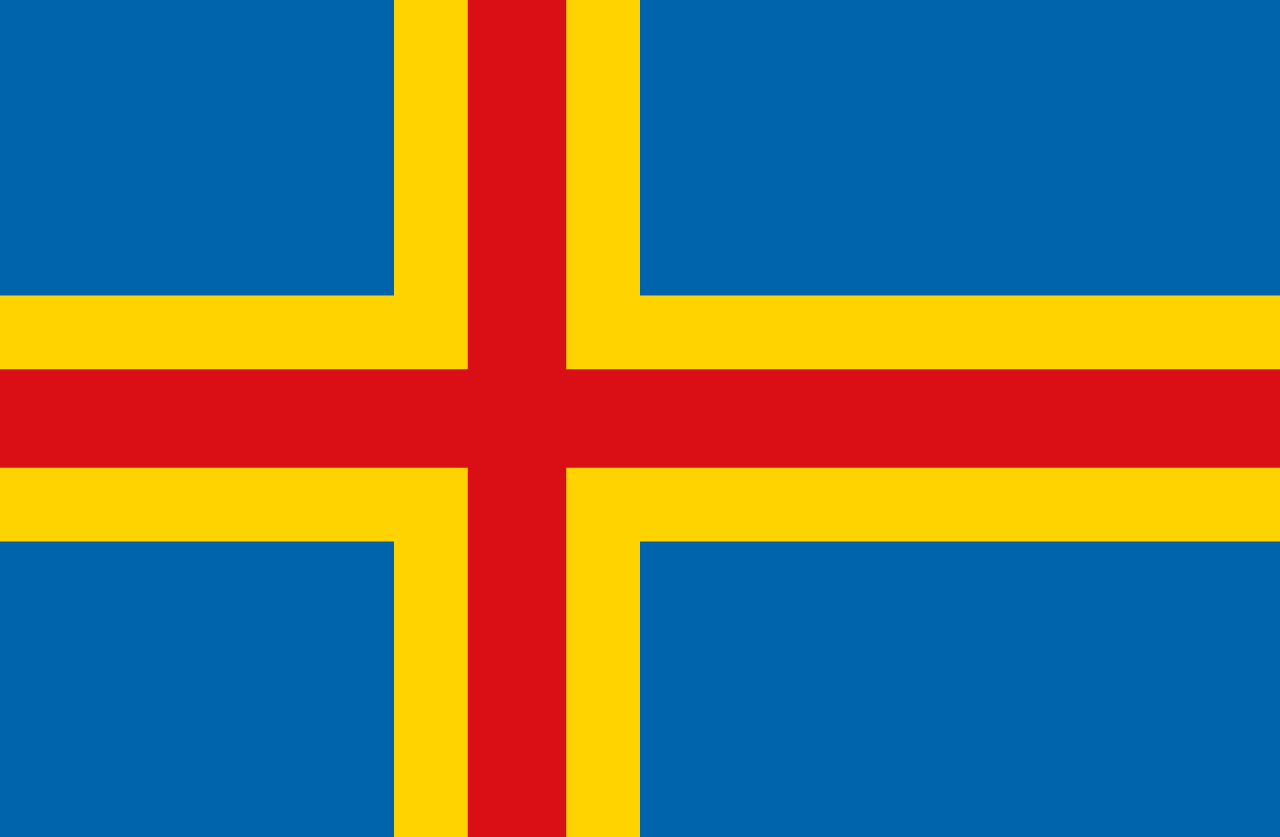
Åland Islands
Adopted 1954
Tucked between Sweden and Finland, the Åland Islands possess a flag that tells the story of a small community balancing geography, culture, and politics. Adopted in 1954, the banner features a golden-bordered red cross set against a blue field, a striking fusion of Nordic tradition and local identity. Its design nods both to Finland, the sovereign state to which Åland belongs, and to Sweden, with which the islands share language and heritage. More than a decorative emblem, the flag is a quiet declaration of autonomy. It's a reminder that this archipelago, though small in population, carries a distinct voice within the Nordic world. To trace its colors and cross is to uncover a history of compromise, self-government, and the enduring importance of symbols in defining a people’s place.
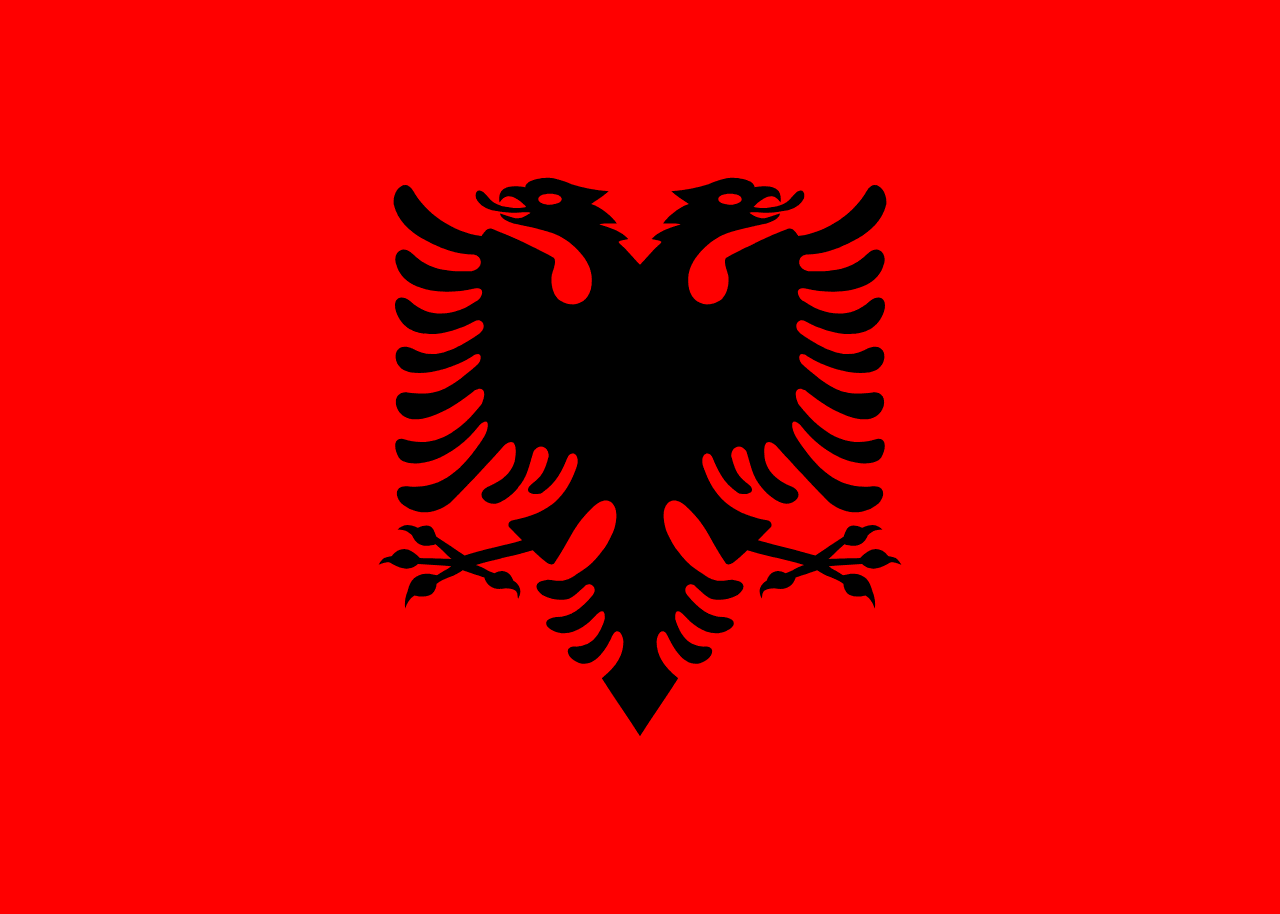
Albania
Adopted 1992
A red field with a black two-headed eagle, one of Europe's oldest heraldic symbols representing Albanian independence, strength, and the legacy of medieval hero Skanderbeg.
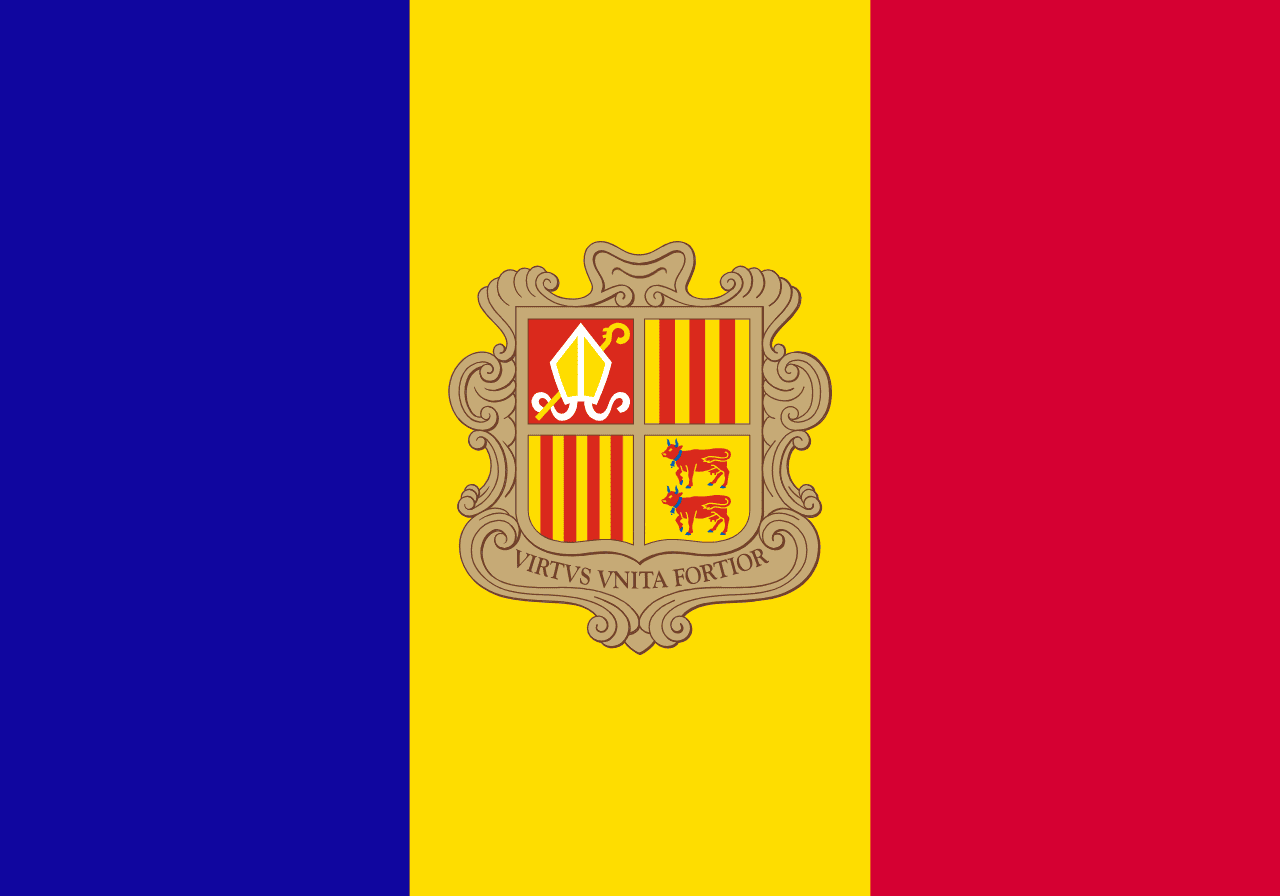
Andorra
Adopted 1866
Three vertical stripes of blue, yellow, and red with the coat of arms centered on the yellow stripe, representing France and Spain (the co-princes), the principality itself, and the unique dual sovereignty arrangement that has governed this small Pyrenean state for over 700 years.

Austria
Adopted 1945
Three horizontal stripes of red, white, and red, representing one of the world's oldest national flag designs, allegedly inspired by Duke Leopold V's blood-stained white surcoat after the Battle of Acre in 1191, and symbolizing the courage, honesty, and strength of the Austrian people.
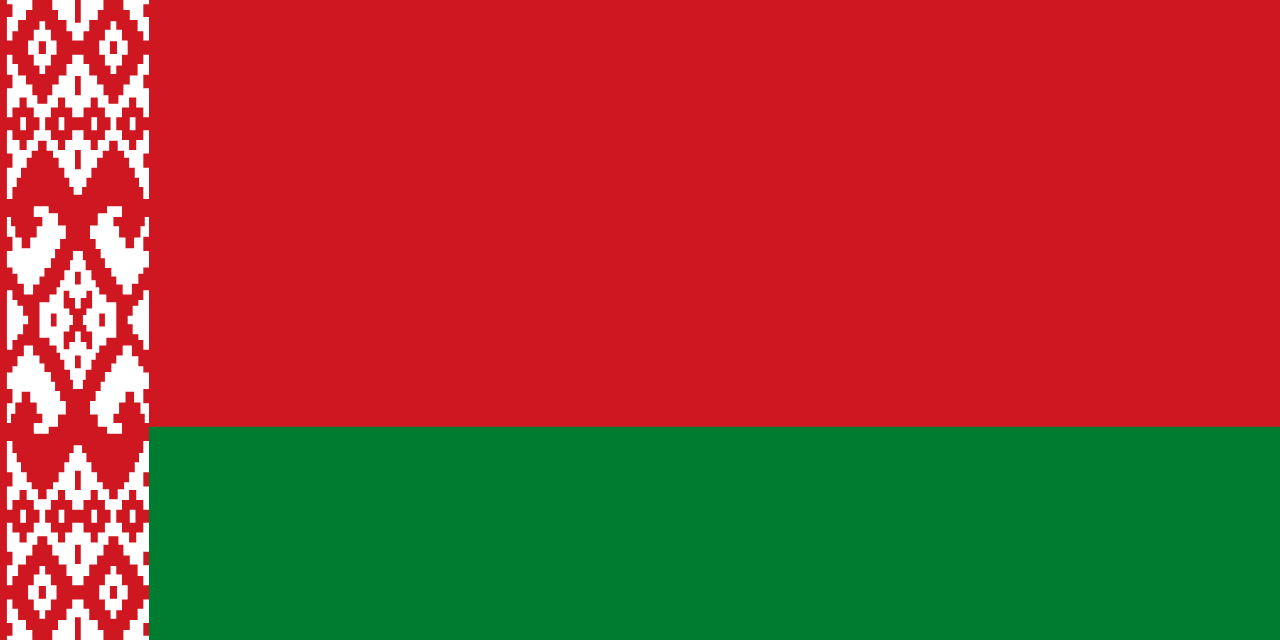
Belarus
Adopted 1995
A red horizontal stripe over a green stripe with a traditional red and white ornamental pattern on the hoist side, representing the historical heritage of Belarus, its forests and agriculture, and the decorative folk art traditions that define Belarusian cultural identity.

Belgium
Adopted 1831
Three vertical stripes of black, yellow, and red derived from the coat of arms of the Duchy of Brabant, adopted during Belgium's independence revolution and representing the nation's determination, generosity, and sacrifice.
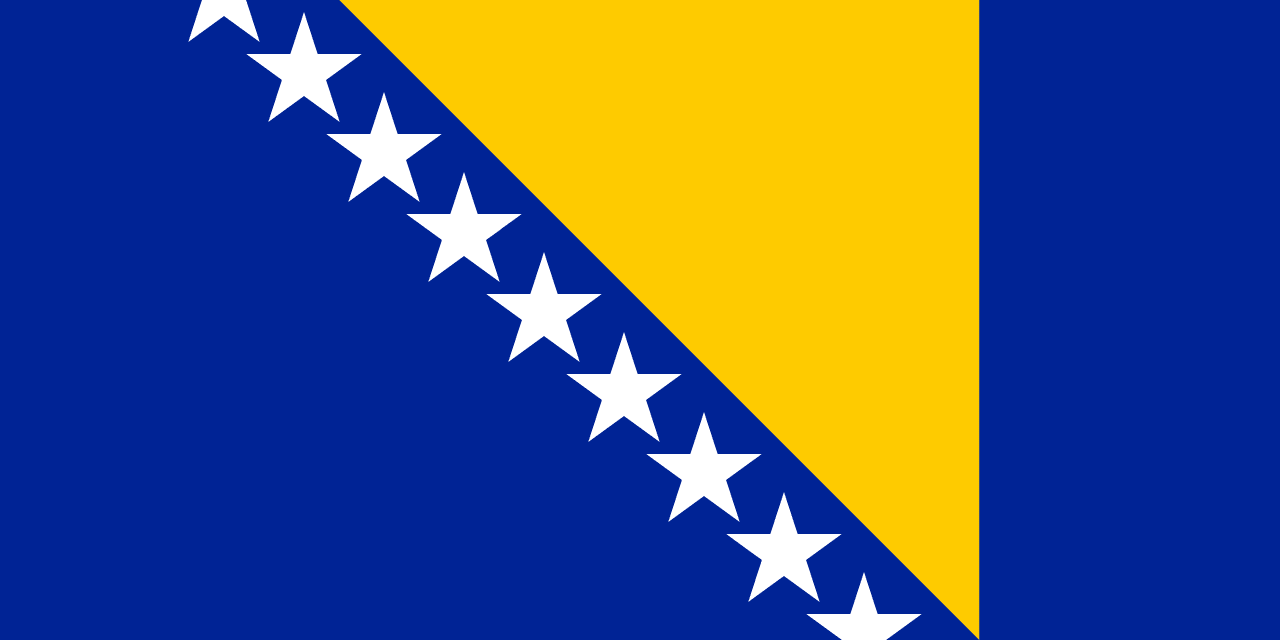
Bosnia and Herzegovina
Adopted 1998
A blue field with a yellow triangle along the hoist and a line of white stars along the triangle's hypotenuse, designed to be ethnically neutral and represent the country's European aspirations while avoiding symbols associated with any particular ethnic group.
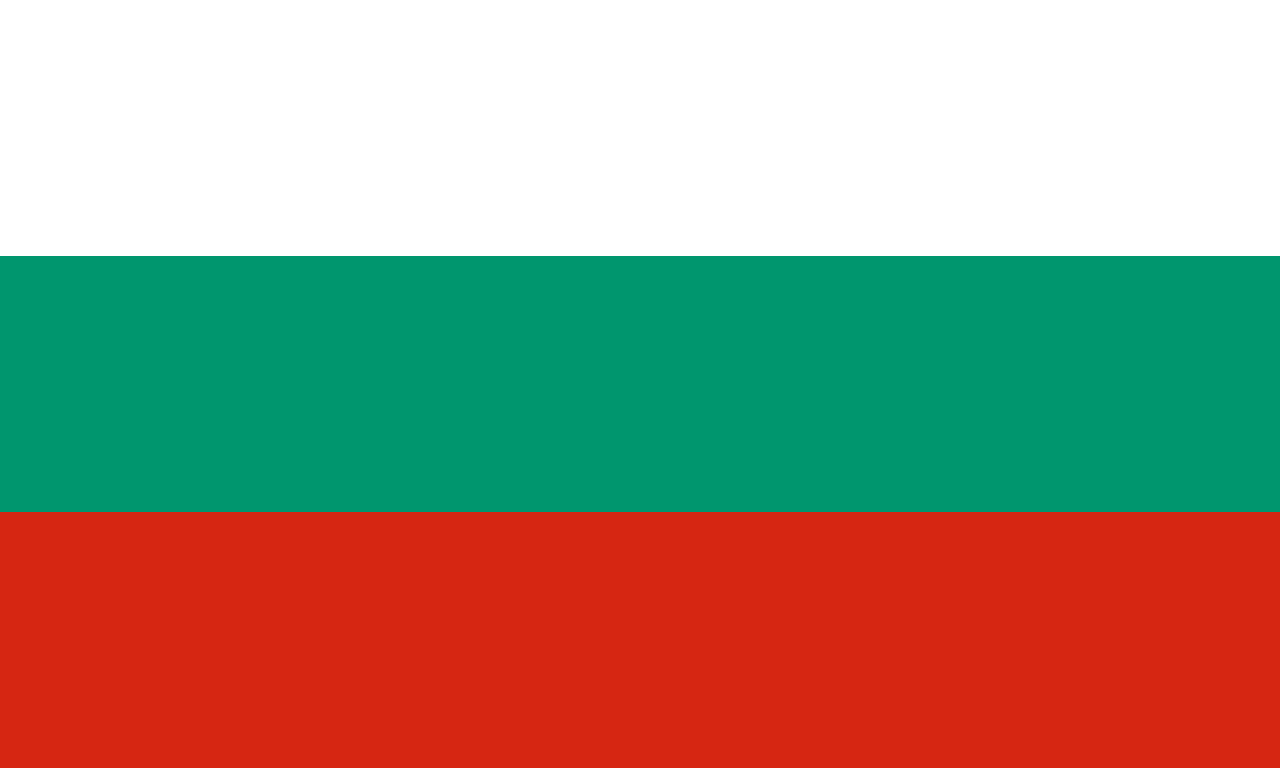
Bulgaria
Adopted 1991
Three horizontal stripes of white, green, and red representing peace and freedom, the agricultural wealth of the nation, and the courage and blood of Bulgarian patriots who fought for independence.
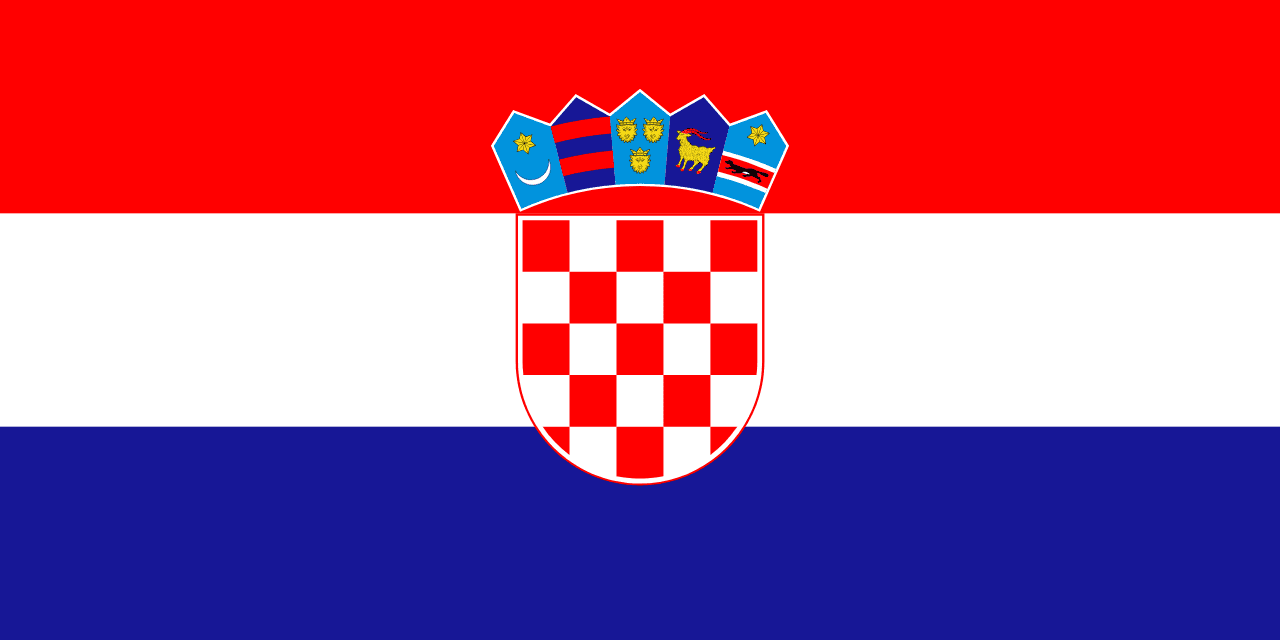
Croatia
Adopted 1990
Three horizontal stripes of red, white, and blue with the Croatian coat of arms centered on the white stripe, featuring the distinctive red and white checkerboard pattern and five historical shields representing the regions of Croatia.

Cyprus
Adopted 1960
A white field with a copper-colored silhouette of the island of Cyprus and two green olive branches below, representing peace, the island's geographic identity, and its ancient association with copper mining and olive cultivation.
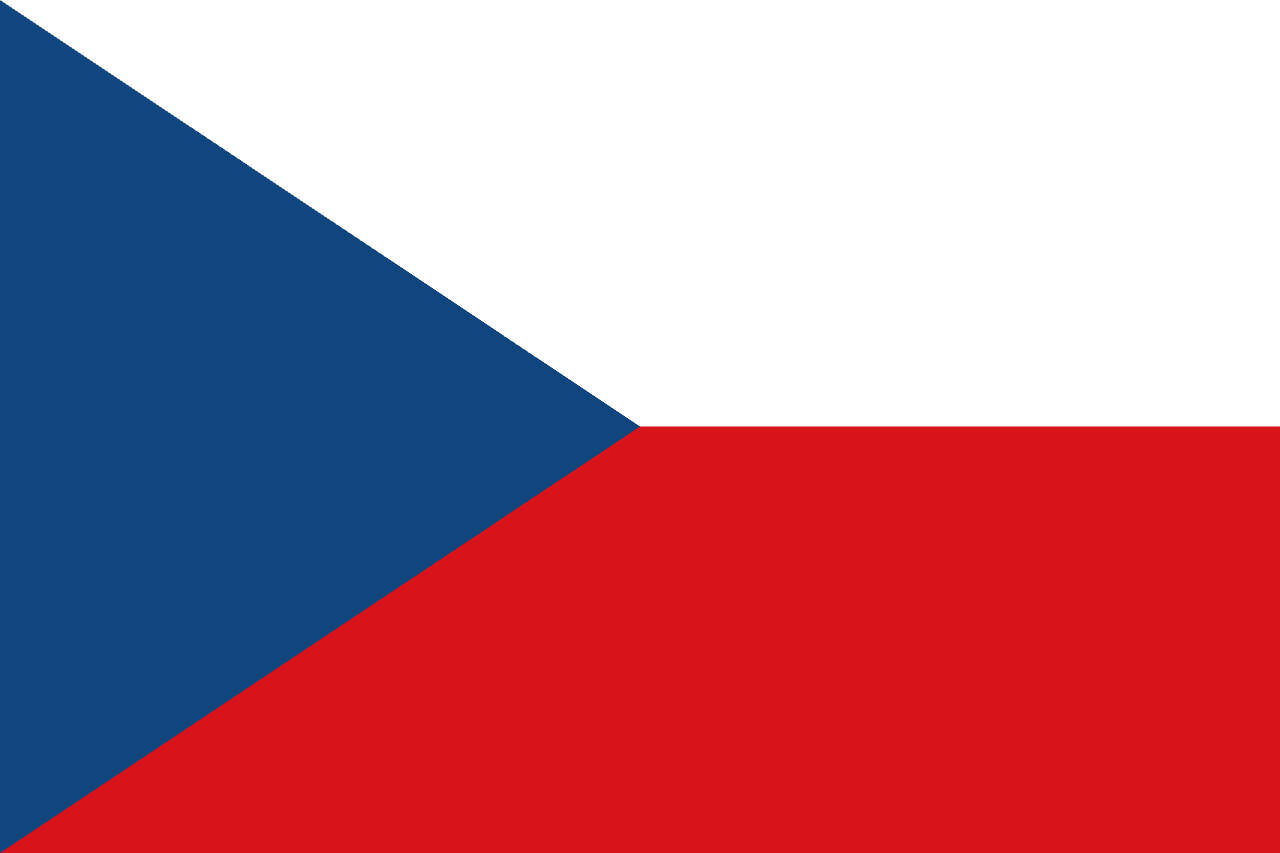
Czech Republic
Adopted 1993
Two horizontal stripes of white over red with a blue triangle extending from the hoist, combining Bohemian colors with Moravian blue, representing the historical lands and democratic ideals of the Czech nation.

Denmark
Adopted 1219
A red field with a white Nordic cross slightly offset toward the hoist, known as the Dannebrog, representing one of the world's oldest national flags and the Christian heritage of the Danish kingdom.
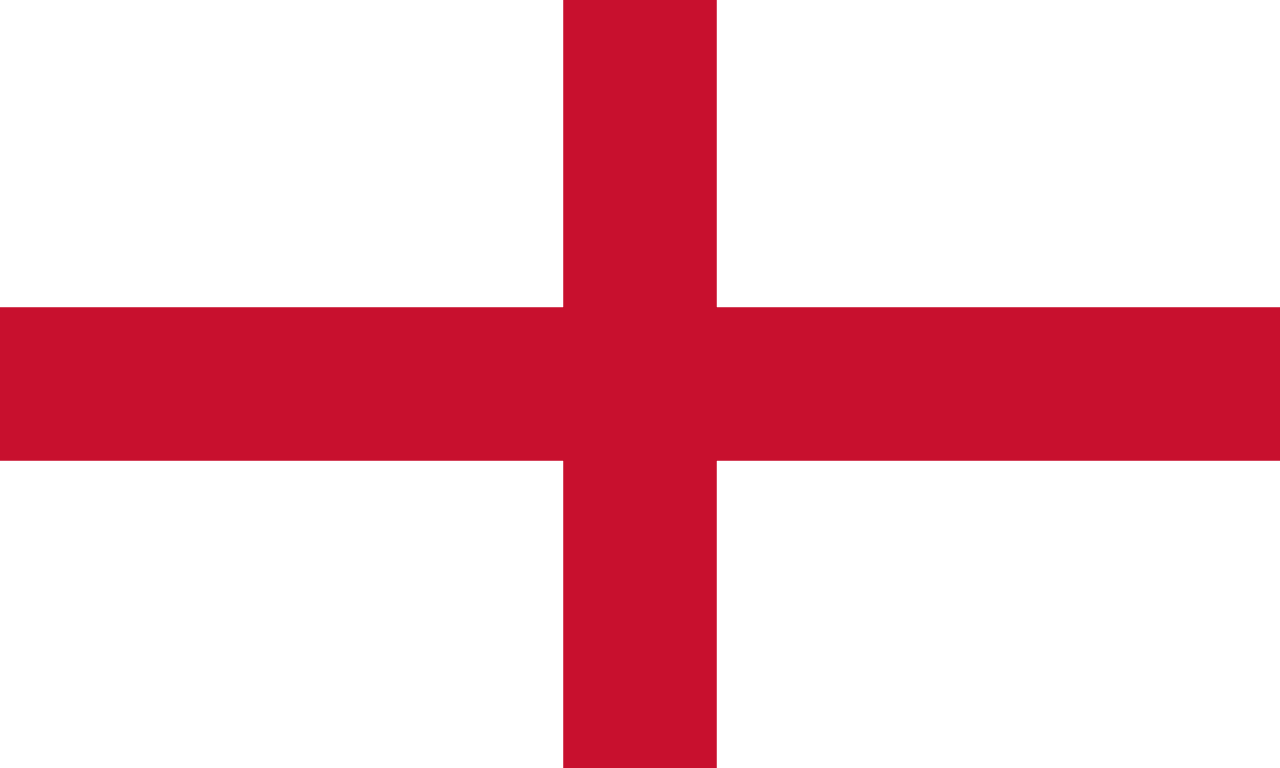
England
Adopted 1190
A red cross on a white field, known as the St. George's Cross, representing England's patron saint and Christian heritage, adopted during the medieval Crusades and remaining the national flag of England within the United Kingdom.

Estonia
Adopted 1990
Three horizontal stripes of blue, black, and white representing the sky and sea, the soil and past struggles, and the snow and bright future of this Baltic nation known for its digital innovation and preserved medieval heritage.

Finland
Adopted 1918
A white field with a blue Nordic cross slightly offset toward the hoist, representing Finland's Nordic heritage, the blue lakes and sky, and the white snow that covers the land for much of the year in the 'Land of a Thousand Lakes.'

France
Adopted 1830
Revolutionary tricolor symbolizing liberty, equality, and fraternity.

Germany
Adopted 1949
Three horizontal stripes of black, red, and gold representing the democratic traditions of Germany, with colors rooted in the 19th-century liberal movement and symbolizing unity, justice, and freedom in the modern Federal Republic.

Greece
Adopted 1978
Nine horizontal stripes alternating blue and white with a blue canton containing a white Greek cross, representing the sea and sky, purity and struggle for independence, and the Greek Orthodox faith that unites the nation.

Hungary
Adopted 1957
Three horizontal stripes of red, white, and green representing strength, faithfulness, and hope, with colors rooted in medieval Hungarian heraldry and the struggle for independence from foreign rule.
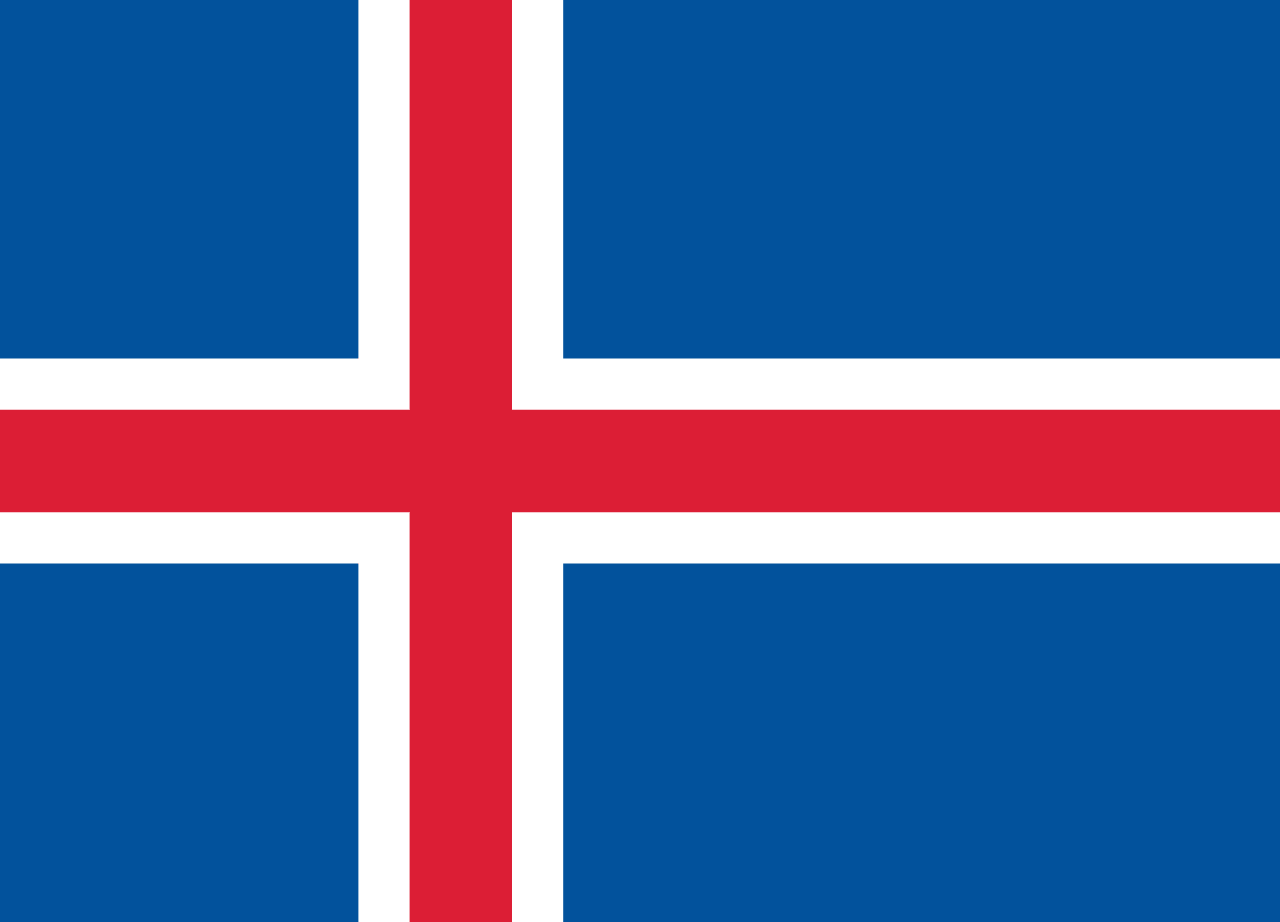
Iceland
Adopted 1944
A blue field with a white-bordered red Nordic cross slightly offset toward the hoist, representing Iceland's Nordic heritage, Christian history, and the natural elements of fire and ice that define the island nation.

Ireland
Adopted 1922
Three equal vertical stripes of green, white, and orange, representing the hope for peace between the Catholic and Protestant communities of Ireland, with the tricolor symbolizing unity and the aspiration for a harmonious Irish nation.
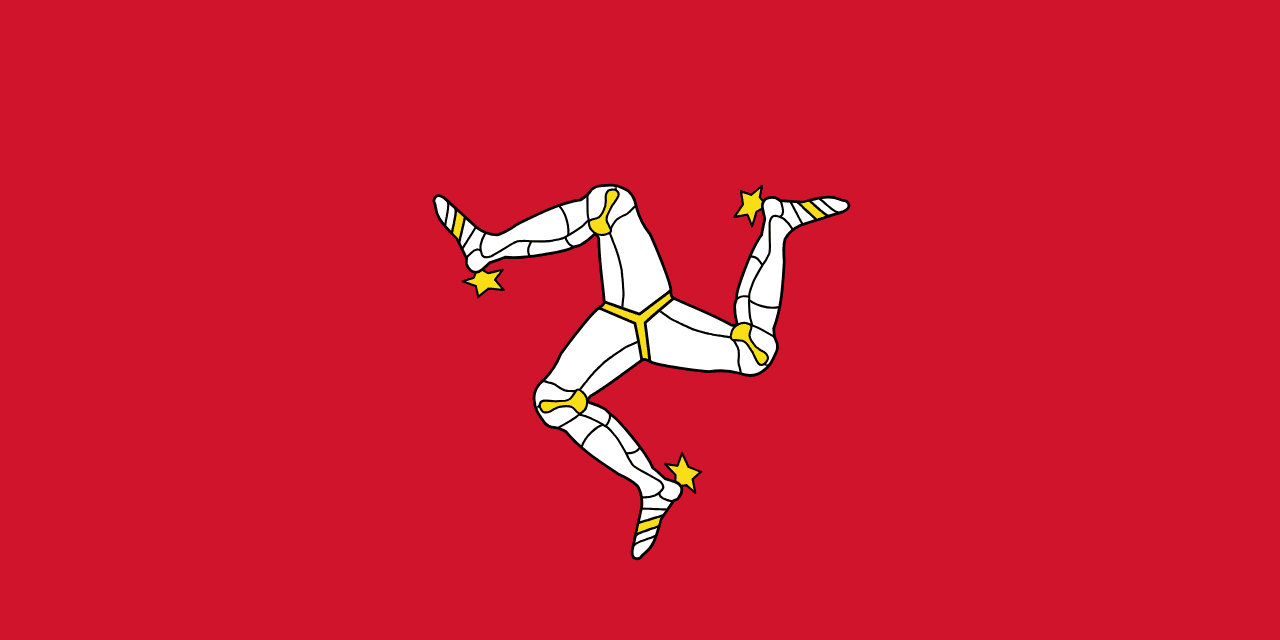
Isle of Man
Adopted 1932
Red field featuring the ancient Celtic triskelion symbol of three armored legs, representing strength and resilience.

Italy
Adopted 1946
Three equal vertical stripes of green, white, and red, known as 'Il Tricolore,' representing the Italian Republic and embodying the values of hope, faith, and charity that unite the Italian peninsula.

Latvia
Adopted 1990
Three horizontal stripes with dark red (maroon) stripes on top and bottom and a narrow white stripe in the center, representing one of the world's oldest flag designs dating back to medieval times and Latvia's struggle for independence.
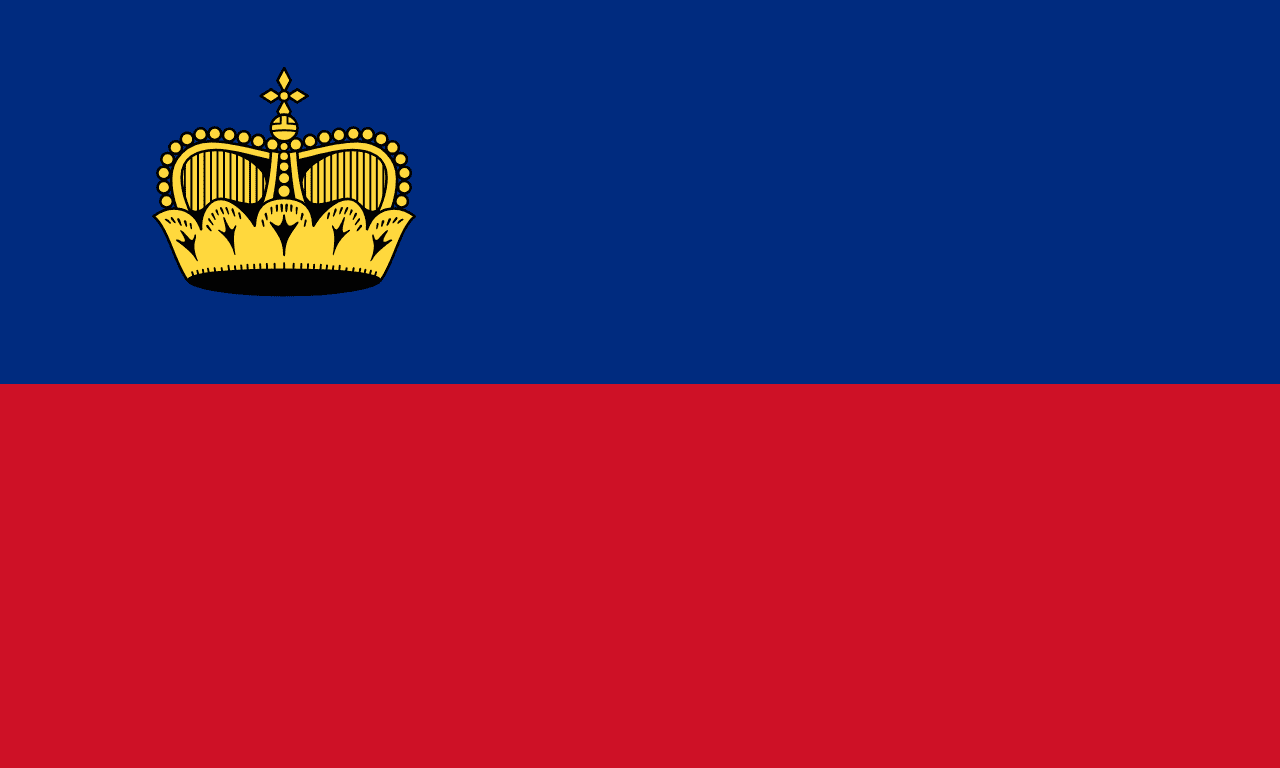
Liechtenstein
Adopted 1937
Two horizontal stripes of blue and red with a golden crown in the upper left corner, representing this Alpine principality that is one of the world's smallest and wealthiest nations.

Lithuania
Adopted 1989
Three horizontal stripes of yellow, green, and red representing the golden wheat fields, green forests, and blood shed for independence of this Baltic nation that led the peaceful dissolution of the Soviet Union.
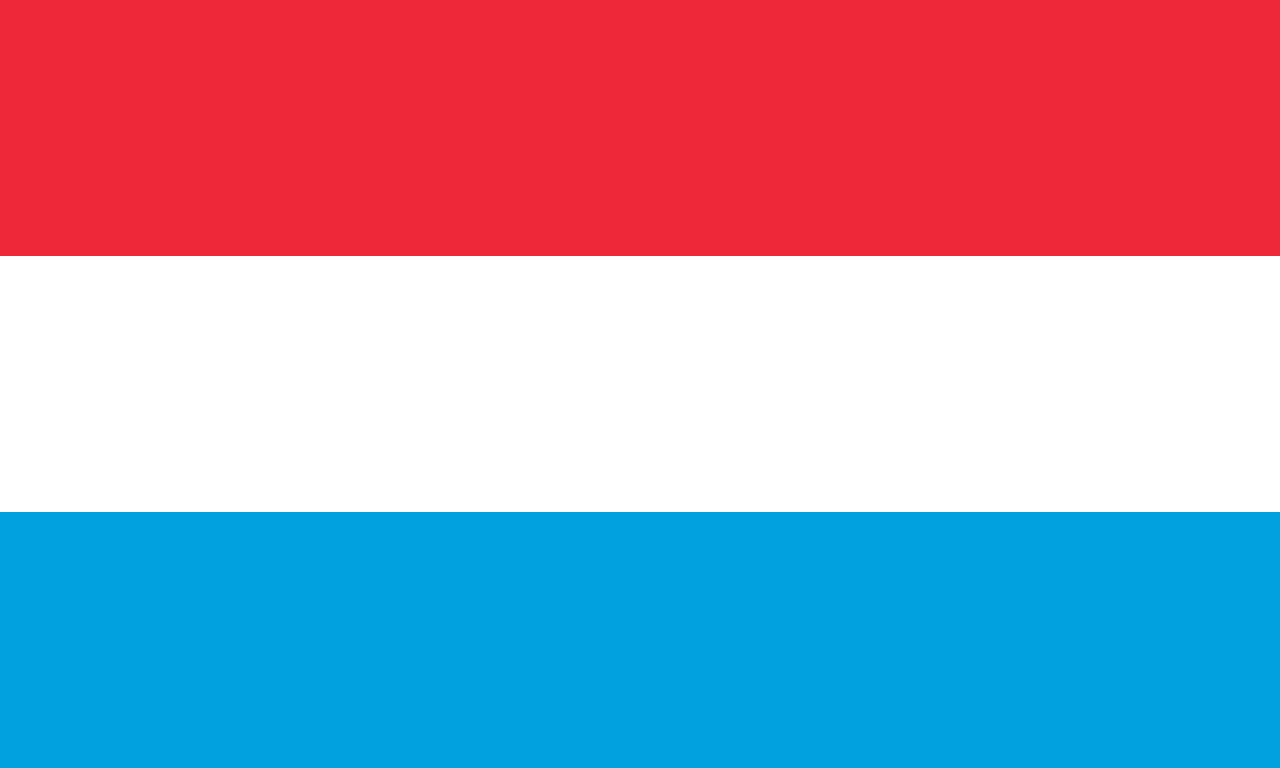
Luxembourg
Adopted 1972
Three horizontal stripes of red, white, and light blue representing the Grand Duchy of Luxembourg, one of Europe's smallest but wealthiest nations and a founding member of the European Union.

Malta
Adopted 1964
Two vertical stripes of white and red with the George Cross in the upper left corner, representing Malta's courage during World War II and its historical significance in the Mediterranean.
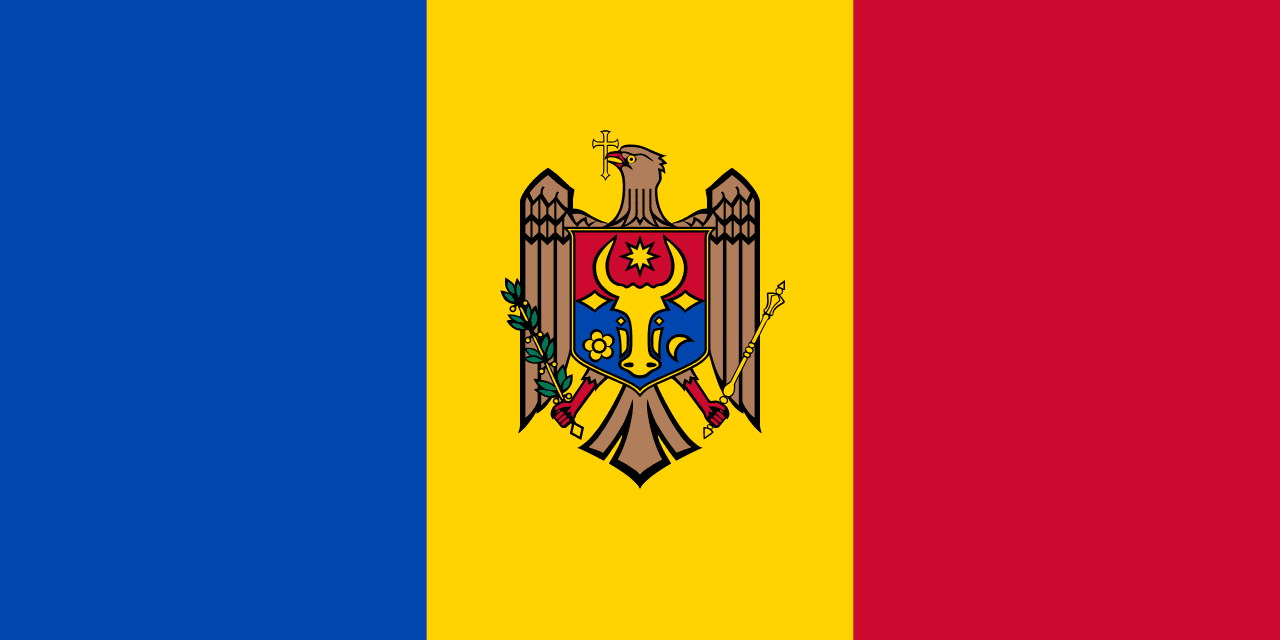
Moldova
Adopted 1990
Three vertical stripes of blue, yellow, and red with the national coat of arms centered on the yellow stripe, representing Moldova's emergence from Soviet rule and its historical connections to Romanian heritage and European identity.
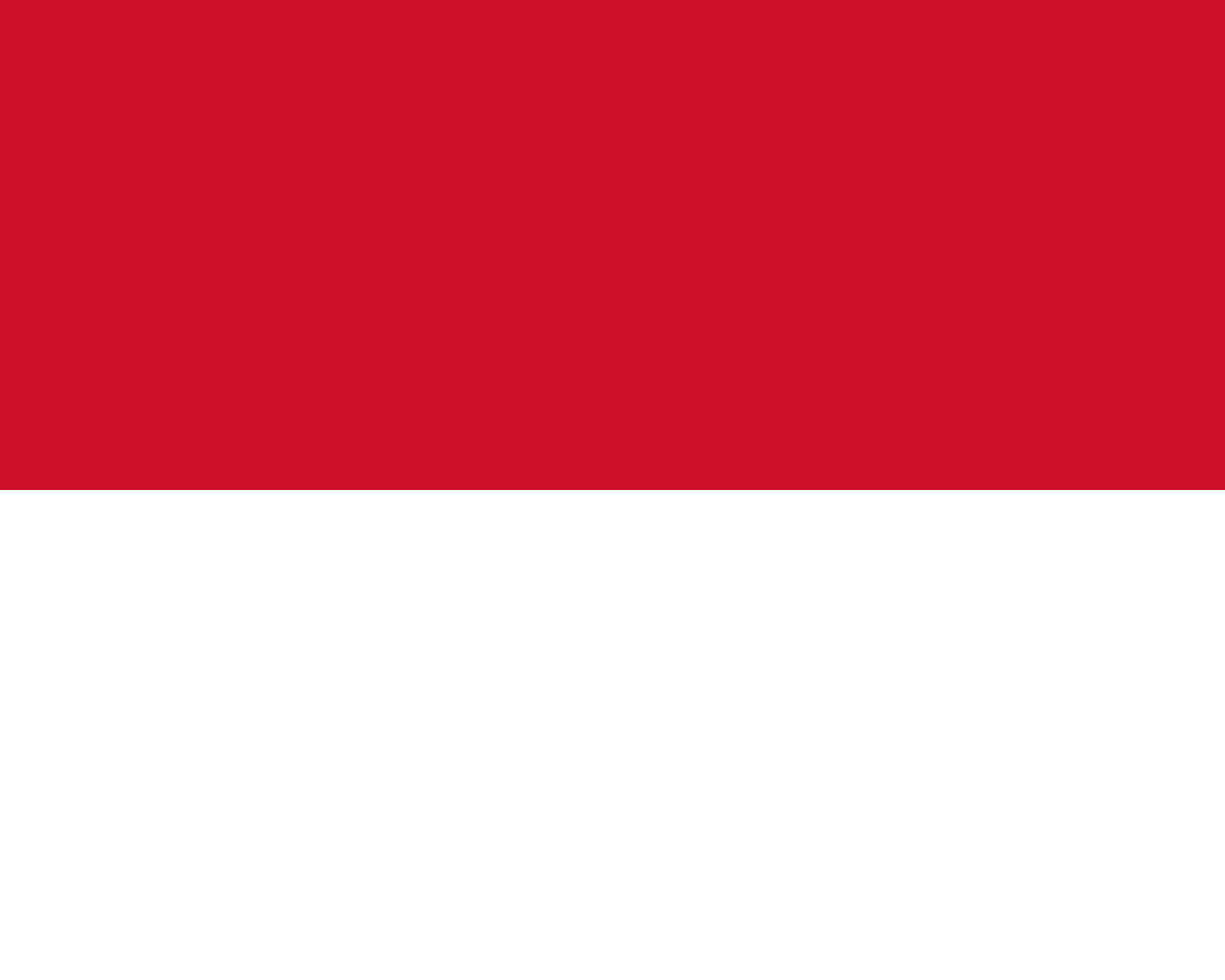
Monaco
Adopted 1881
Two horizontal stripes of red and white derived from the heraldic colors of the House of Grimaldi, representing one of the world's smallest sovereign states and oldest ruling dynasties.
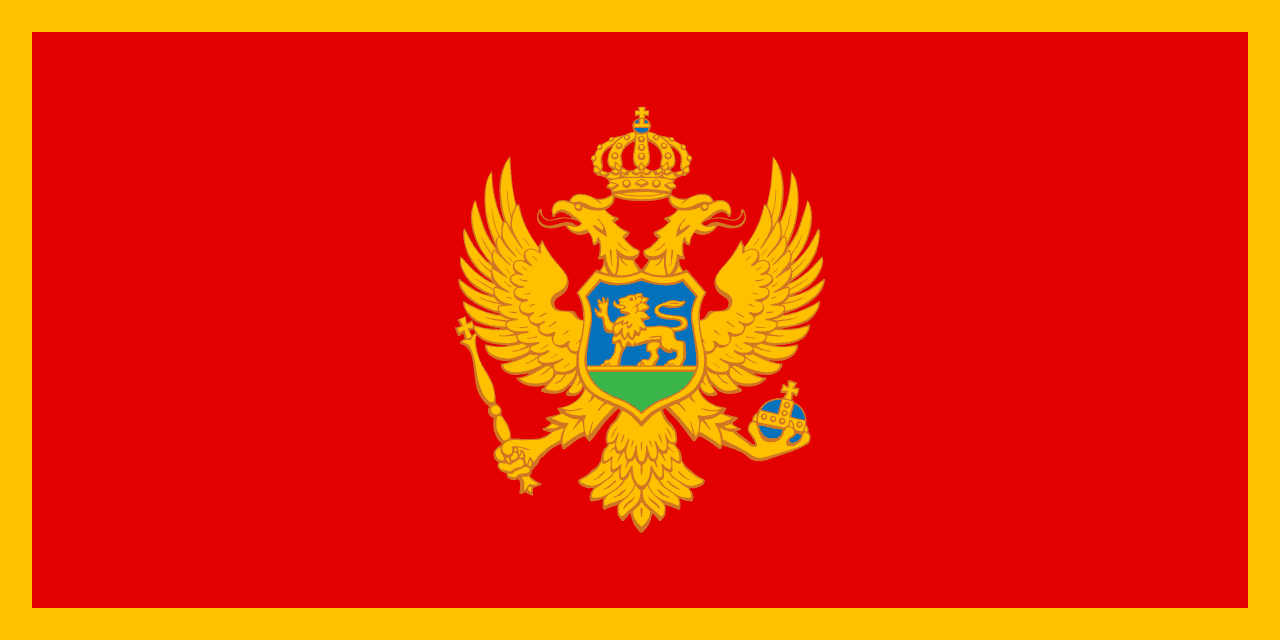
Montenegro
Adopted 2004
A red field with golden border and the coat of arms featuring a golden double-headed eagle, representing Montenegro's medieval heritage, Orthodox Christian identity, and recent independence from Serbia.

Netherlands
Adopted 1937
A horizontal tricolor of red, white, and blue, the oldest tricolor still in use today. It originated in the 16th century during the Dutch Revolt against Spain.
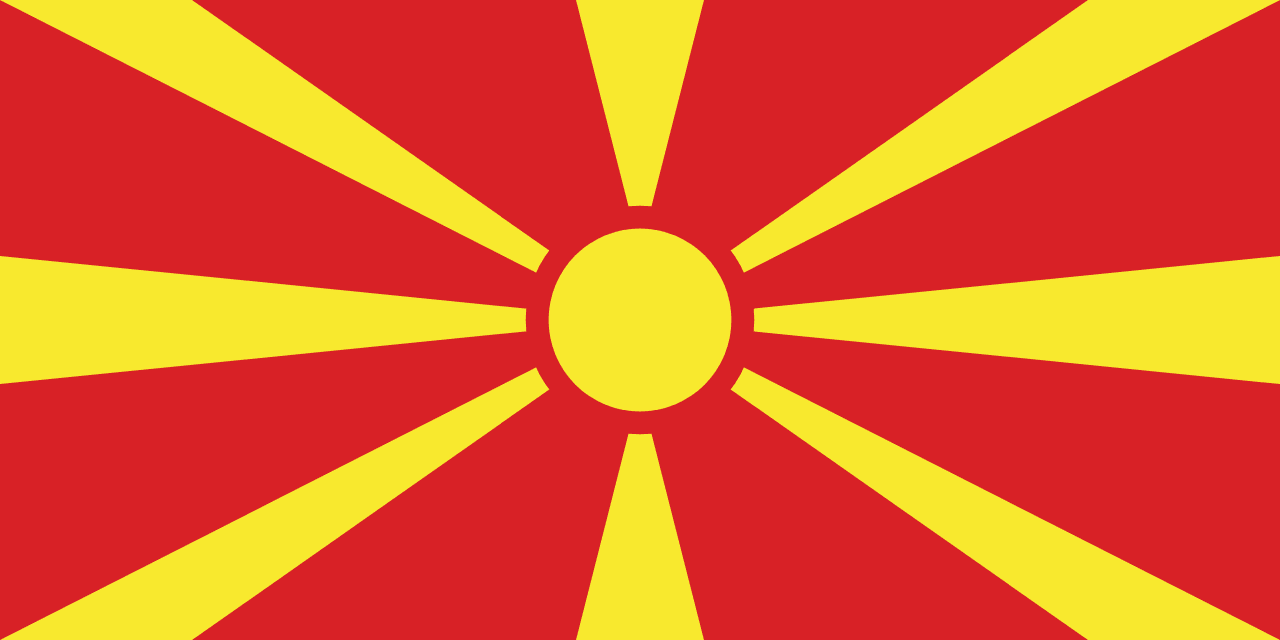
North Macedonia
Adopted 1995
A red field with a golden-yellow stylized sun with eight broad rays extending to the edges. Known as the 'Sun of Liberty,' it symbolizes freedom and the new nation’s identity.
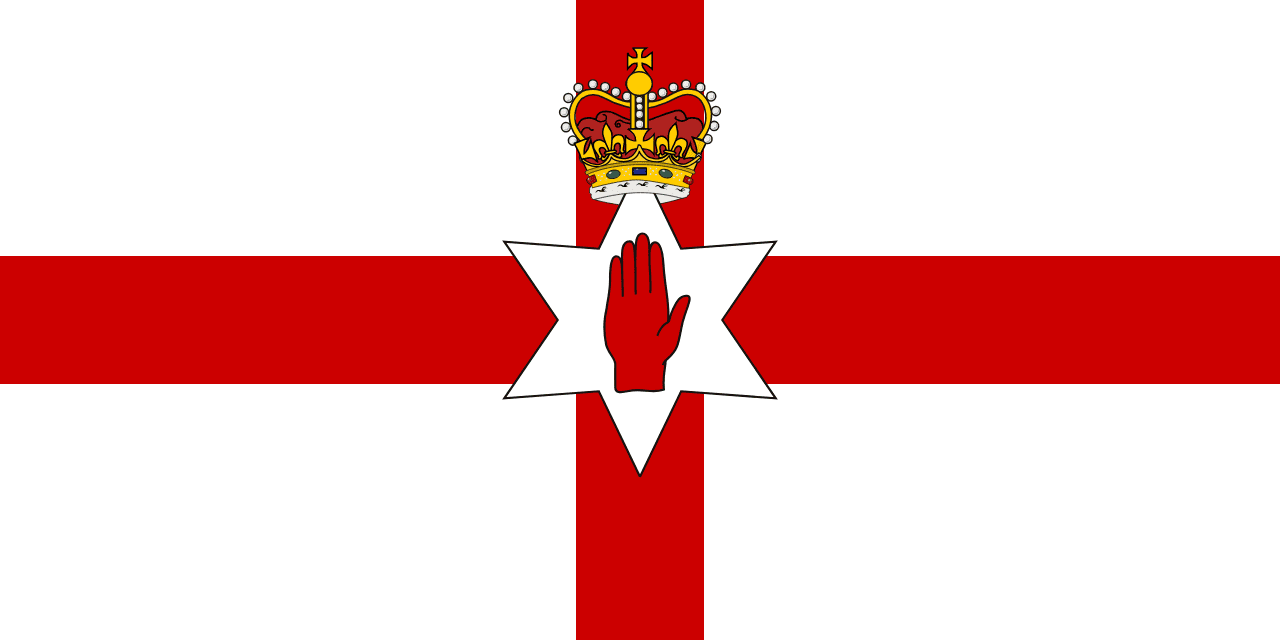
Northern Ireland
Adopted 1953
The Ulster Banner - featuring the Red Hand of Ulster on a white field with the Union Jack canton and crown, served as Northern Ireland's official flag from 1953-1972 and remains in unofficial use today.

Norway
Adopted 1821
Nordic cross design with red field, white cross, and blue outline, symbolizing Norwegian independence and Scandinavian heritage.

Poland
Adopted 1919
A simple bicolor of white over red, reflecting Poland’s heraldry and national identity. The design is among the simplest yet most recognizable European flags.

Portugal
Adopted 1911
A vertical bicolor of green and red with the national coat of arms at the boundary. The design reflects Portugal’s history of exploration, discovery, and national pride.

Romania
Adopted 1989
A vertical tricolor of blue, yellow, and red, representing the unity of Romania’s historical regions. The design dates to the 19th century and was restored after the fall of communism in 1989.
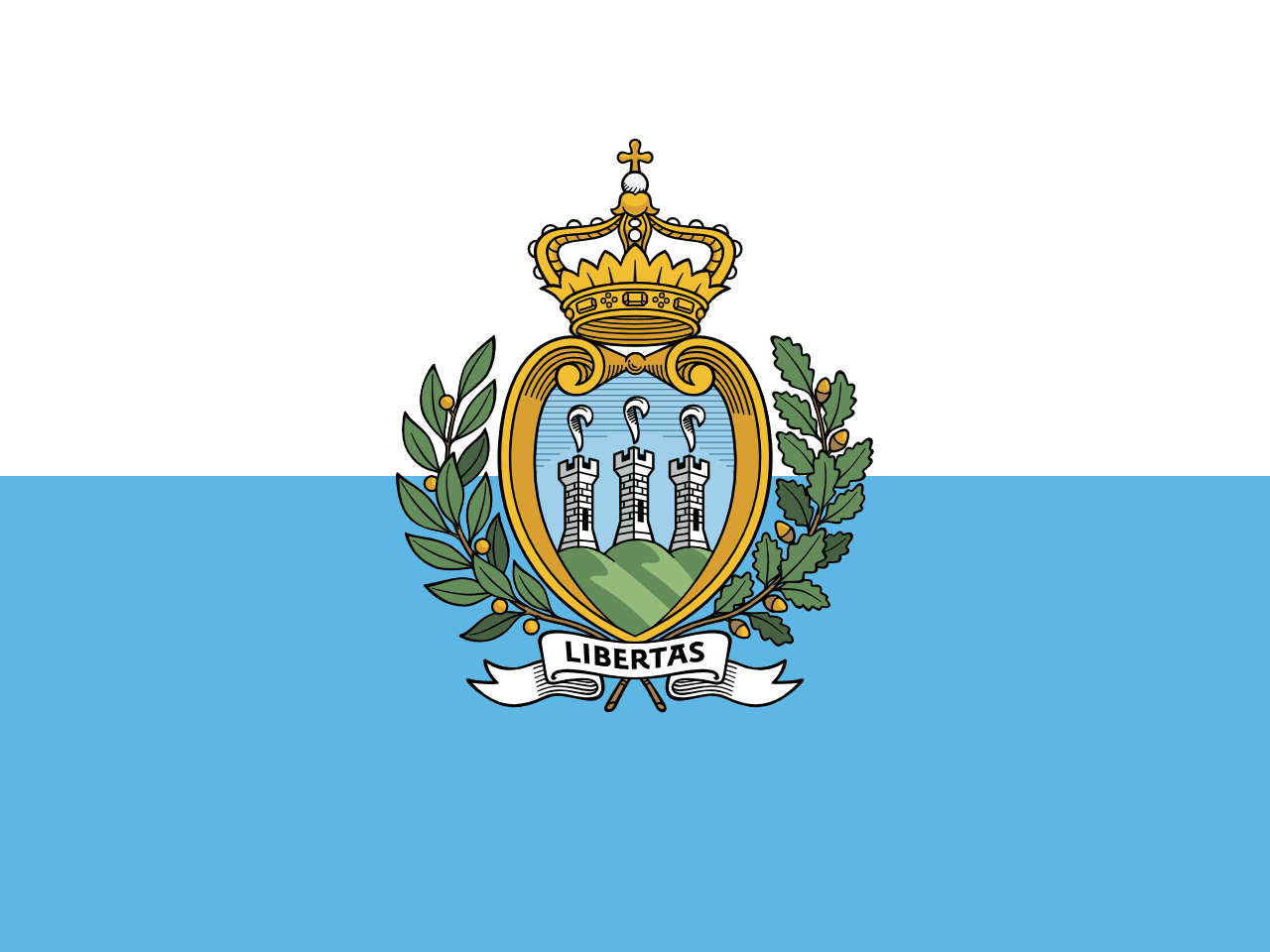
San Marino
Adopted 1862
White and light blue horizontal bicolor with coat of arms featuring three towers representing the ancient fortress republic on Mount Titano.

Scotland
Adopted 12th century
The Saltire - white diagonal cross of Saint Andrew on azure blue field, one of the world's oldest national flags.
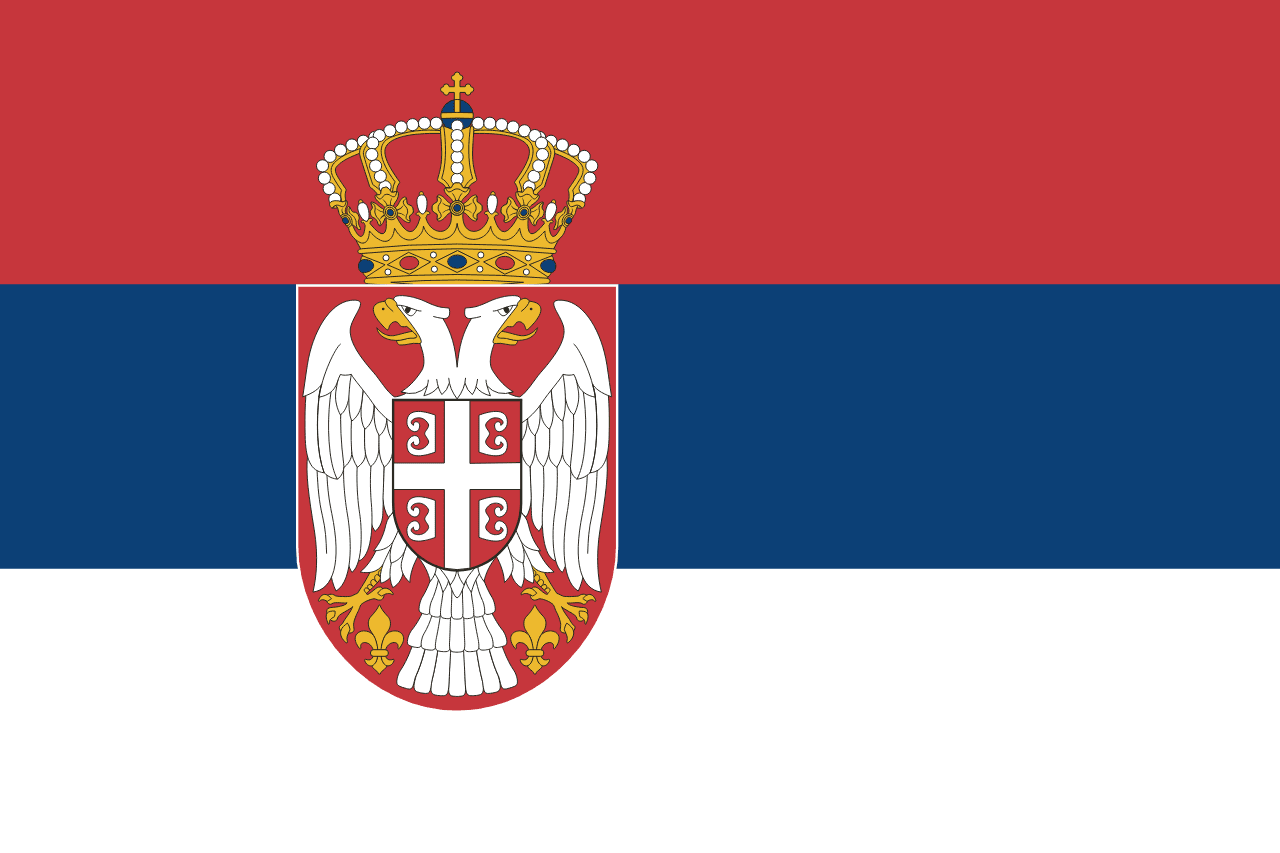
Serbia
Adopted 2004
A horizontal tricolor of red, blue, and white with the national coat of arms offset toward the hoist. The coat of arms features a double-headed white eagle, the Serbian cross, and a royal crown.

Slovakia
Adopted 1992
A horizontal tricolor of white, blue, and red with the Slovak coat of arms placed toward the hoist. The coat of arms features a double silver cross rising from three blue hills, symbolizing Christianity and Slovakia’s mountainous landscape.

Slovenia
Adopted 1991
A horizontal tricolor of white, blue, and red with the Slovenian coat of arms placed toward the hoist in the upper stripe. The coat of arms features Mount Triglav, Slovenia’s highest peak, three six-pointed golden stars, and wavy blue lines representing rivers and the Adriatic Sea.

Spain
Adopted 1981
Two horizontal red stripes separated by a yellow stripe twice their width, with the national coat of arms on the yellow stripe toward the hoist, representing the historical kingdoms of Castile and Aragon and the traditional colors that have symbolized Spain for centuries.

Sweden
Adopted 1906
A blue field with a yellow Nordic cross extending to the flag's edges, representing the Christian heritage that shaped Swedish culture and the national colors that have symbolized Sweden since medieval times, part of the Nordic cross tradition shared with other Scandinavian countries.

Switzerland
Adopted 1889
A red square field with a white Greek cross in the center, representing the Christian faith that united the early Swiss cantons and the blood shed in defense of freedom, with origins dating back to the Holy Roman Empire and medieval Swiss military banners.
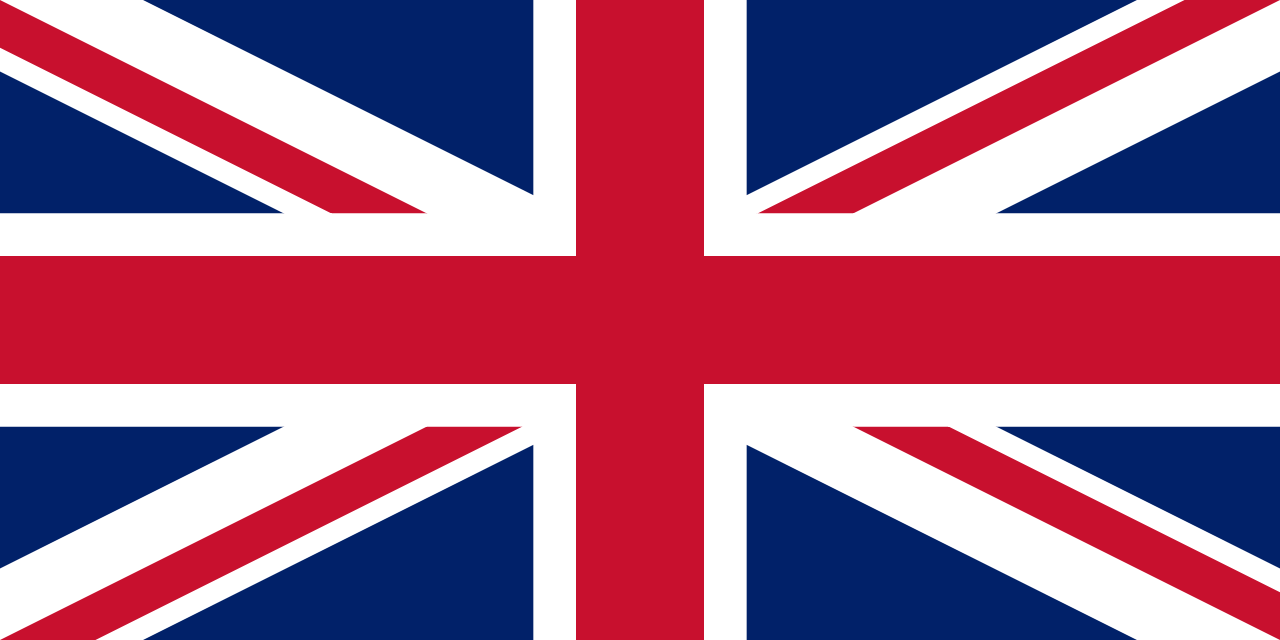
United Kingdom
Adopted 1801
The Union Jack combines the crosses of Saint George (England), Saint Andrew (Scotland), and Saint Patrick (Ireland) on a blue field, representing the political union of England, Scotland, and Ireland under one crown, though Wales is not directly represented in the flag design.

Ukraine
Adopted 1992
Two horizontal bands of blue over yellow, representing the blue sky over golden wheat fields that symbolize Ukraine as the 'breadbasket of Europe,' with colors that have represented Ukrainian identity for centuries and were officially adopted after independence from the Soviet Union.
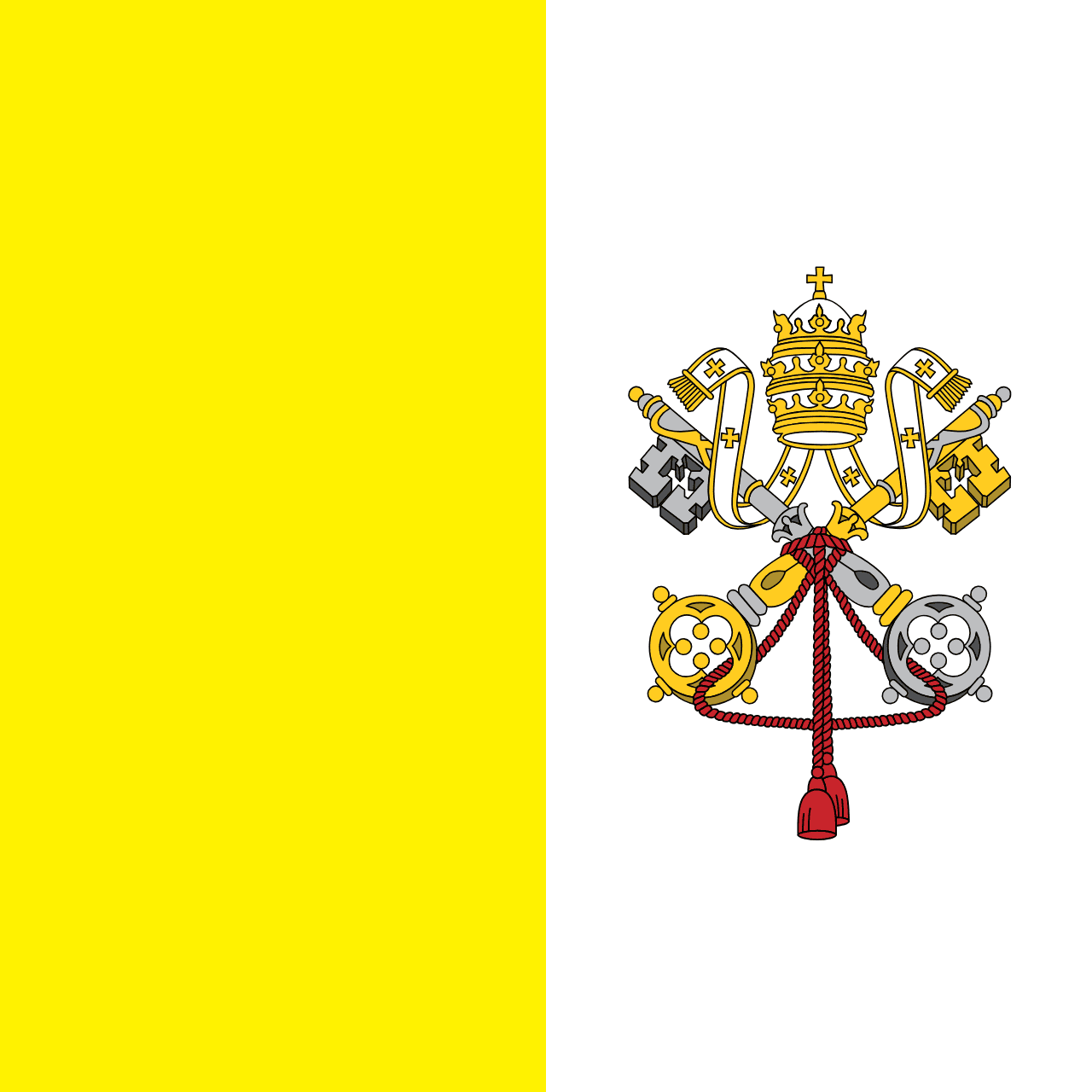
Vatican City
Adopted 1929
Two vertical bands of yellow and white with the papal coat of arms featuring crossed keys and the papal tiara on the white band, representing the temporal and spiritual power of the Pope as sovereign of the world's smallest state and leader of the global Catholic Church.

Wales
Adopted 1959
Y Ddraig Goch - the red dragon passant on green and white horizontal field, representing Welsh heritage and Celtic identity.
About European Flags
Heraldic Traditions
European flags draw heavily from medieval heraldry, with coats of arms, royal symbols, and ancient family crests forming the basis for many national designs that have evolved over centuries.
Revolutionary Colors
The French tricolor's red, white, and blue became a template for democratic movements across Europe, with many nations adopting similar color schemes to represent liberty, equality, and fraternity.
Nordic Cross Pattern
Scandinavian countries share the distinctive Nordic cross design, representing their Christian heritage and regional unity while maintaining individual national identities through different color combinations.
Explore Popular European Flags
European Flag Patterns
Tricolor Influence
The French Revolution's tricolor inspired democratic movements across Europe. Many countries adopted three-stripe designs to represent revolutionary ideals and rejection of monarchist symbols.
Examples: France, Netherlands, Germany, Italy, Ireland
Slavic Colors
Many Slavic nations use red, white, and blue in various arrangements, often tracing back to the Russian flag and representing pan-Slavic unity and shared cultural heritage.
Examples: Russia, Czech Republic, Slovakia, Slovenia, Serbia